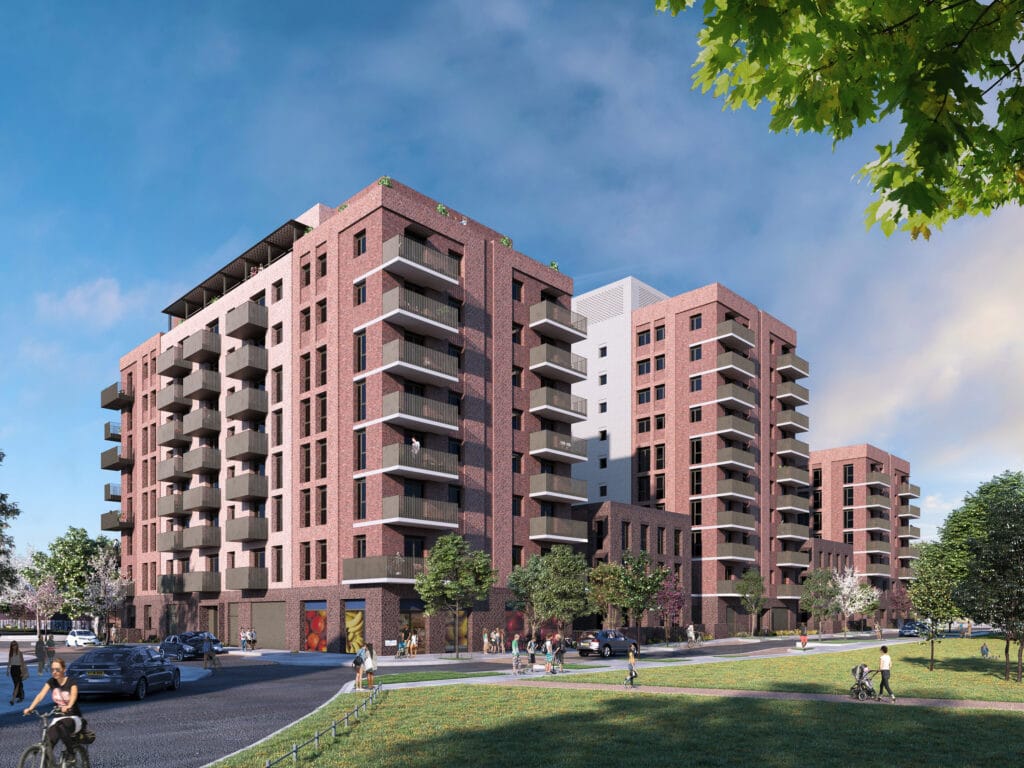PUTTING PEOPLE FIRST: HOW ESTATE REGENERATION CAN WORK FOR OUR COMMUNITIES
PUTTING PEOPLE FIRST: HOW ESTATE REGENERATION CAN WORK FOR OUR COMMUNITIES

Wednesday, 2 August
By Colin Boxall, Managing Consultant at Inner Circle Consulting
Delivering new housing at pace is a major focus for local authorities across the UK. Making sure you get the practical steps right is key, but so is making sure that a place continues to work for both old and new residents during any period of change.
Last month Grahame Park Estate (which is being let by Notting Hill Genesis in partnership with the LB Barnet), won the award for Regeneration in the Placemaking Category at the Planning Award 2023. This ambitious estate regeneration project, which I have worked on for several years, included people-focused measures that were critical to creating an inclusive, prosperous place.
These ingredients helped capture the transformational benefits for residents, minimise any adverse impacts, create value and ultimately ensure the place works for the people who live there – building stronger communities that can create a better future for all. Here’s a summary of the main ingredents:
Neighbourhood Coordination. Bridging the gap between physical change and the lives of residents requires effective coordination across an estate by a range of stakeholders. Putting in place a strong local governance arrangement to ensure that the whole place and its people are considered, and positive action delivered, is a must. This requires a strong partnership arrangement that brings together service providers, land owners, and community representatives; has a clear purpose; and enables all partners to contribute and deliver effectively.
An Established Social and Economic Framework. Aclear framework for supporting, delivering and improving social and economic prosperity for residents most in need, is key. This must also be backed up by a robust evidence base. Notting Hill Genesis developed a Neighbourhood Change Social Impact Framework, supported by a dedicated team with a core budget and S106 contributions, to support existing residents across priority areas like economic inclusion, health and wellbeing, community safety and public spaces. This enabled them to work with service providers to improve collaborative working and deliver tangible impacts to residents’ lives.
Social Value Maximisation. Estate regeneration is expensive. This translates into major contracts. Residents really benefit when there is a considered approach that ensures that every contract maximises the social value outcome of contractors and consultants working on it. For estate regeneration the key is understanding the needs of that community so the social value outputs are bespoke and particular to the community. To be most effective it requires dedicated staff who know the patch to be able to act as brokers and can link to existing programmes that work.
Deliver Social Infrastructure Early. While this can be a strain on viability, the benefit of delivering the social infrastructure that residents need early in the programme shows commitment, ensures new residents are not seen to be putting a further strain on existing resource, is a clear symbol of progress and builds positive support for the scheme.
Meanwhile Opportunities. This is not a new concept, but using vacant spaces and places to deliver positive uses and activities for residents, attract visitors and change the perception of an area, can deliver change quickly. However, it’s important not to underestimate the time and resources required to make this happen, particularly on estates that have (often unfounded) negative perceptions and/or lack footfall. Identify uses and activities that are relevant and realistic for the area (not everywhere can sustain a pop-up theatre or event space) Key to a successful approach is engaging with local operators and securing community outcomes, allowing the flexibility to shape the outcome and ensuring the space is available long enough to make any new venture a success.
Making Placemaking Real. Creating a place that works is complicated – even more so on an estate regeneration project that may span 10-20 years. While a well thought out masterplan and phasing plan will clearly help, it’s important to consider how the place will be shaped over many years, what the final vision looks like and what needs to happen along the way to make that a reality. At Inner Circle we have found that defining place priorities with stakeholders and setting out a clear plan of actions needed along the way to make that a reality, can really focus minds and bring positive, achievable purpose to what might otherwise feel like a daunting construction programme. It also provides a framework for ‘future flex’ – as plans and needs will certainly change over the course of a long-term regeneration project.
Don’t Forget the Residents
Estate regeneration is all about changing places for the better so there must be tangible benefit for residents. This means that all activities should be built on a solid knowledge of what resident want and need – informed by a robust engagement framework that enables them to be truly involved and feel pride in their local place.
Measure Your Impact. Saying you are doing great things is one thing, but being able to evidence your impact is more powerful and allows you to learn, tweak and shape your regeneration programme as you go. Notting Hill Genesis do this on Grahame Park via a 3 yearly cycle of impact reporting on their community investment programmes – which is informed not just on statistical data, but qualitive feedback from residents and staff who are delivering or maintaining the estate. They then use this information to shape future funding decisions and work with partners on effective service delivery.
Create a Brand. Start changing a wider narrative about a place via creative and cultural activity. This can help generate local interest and positive media coverage that in turn can shift perception. Building interest and excitement about a regeneration change is possible and indeed preferable to changing a place’s identity.
Want to read more? Here’s my article on practical steps to ensure estate regeneration is delivered effectively: https://www.innercircleconsulting.co.uk/2023/05/how-estate-regeneration-can-help-resolve-the-housing-crisis-and-some-practical-steps-to-make-ensure-it-is-delivered-effectively/

